I obtained a Biochemistry degree in 1998 at Faculdade de Ciências, Porto University. Afterward, I started a PhD in Chemistry at the same institution focusing on the enzymatic mechanisms of firefly luciferase. This PhD resulted from a collaboration between Departamento de Química da Faculdade de Ciências and Serviço de Bioquímica da Faculdade de Medicina da Universidade do Porto. During my PhD I was able to explain why coenzyme A, used as an additive in commercial cocktails, was able to stimulate the luminescence reaction. After my PhD, I joined the laboratory of Prof Woodland Hastings at Molecular Cellular Biology (MCB), Harvard University, USA, where I pursued studies on bioluminescence. In 2008, after Prof. Hastings jubilation, I transferred to the lab of Prof. Alfred Goldberg at the Department of Cell Biology at Harvard Medical School. At the Goldberg Lab I was able to propose a mechanism for the functioning of the AAA+ hexameric ring PAN, a 19S proteasome homologue, and show that although PAN has six identical subunits it binds ATPs in pairs, and its subunits exhibit three conformational states with high, low, or no affinity for ATP.
In 2009 I returned to Portugal and initialized studies with a small protein isolated from the parasite Fasciola hepatica (FH8). Sequence analysis revealed that FH8 had two EF-hand Ca2+-binding motifs. I showed that the protein binds Ca2+, promoting large conformational changes, and behaves like a Ca2+sensor.
In 2011, I relocated to Salvador Ventura Lab and I was able to demonstrate that Tim15, involved in the chaperoning of mtHsp70 in the mitochondrial matrix, shifts from an essentially unfolded peptide to a folded peptide upon Zn2+coordination. Moreover, I established unambiguously that Tim15 folding is essential for its role as mtHsp70 chaperone. I also studied the oxidative folding of Cox19, a small twin CX9C motif protein, involved in the copper efflux to the mitochondrial Intermembrane space. I demonstrated that Cox19 when fully reduced is unfolded but when imported into the IMS, it rapidly folds as a consequence of its oxidation catalyzed by Mia40. Mia40s role is to funnel a rough folding landscape, skipping the accumulation of kinetic traps.
In 2014, I moved to the Boisbouvier lab, Institut de Biologie Strucuturale, Grenoble, France, where I initialized studies on ClpP, a bacterial protease also present in mitochondria and an important drug target. In the same year, I was invited by Prof Alfred Golberg, Harvard Medical School, to optimize HTS assays at Glaxo Smith and Kline Open Lab aimed at the discovery of inhibitors for the ClpCP1P2 complex from Mtb. A collaboration project involving Institut de Biologie Strucuturale, Harvard Medical School and Glaxo Smith and Kline was initiated.Selected Publications
Mechanism of the allosteric activation of the ClpP protease machinery by substrates and active-site inhibitors. Science Advances5(9):, 2019. [Journal: Article] [CI: 42] [IF: 13,1]
DOI: 10.1126/sciadv.aaw3818 SCOPUS: 85070353997
Gauto D.F., Macek P., Barducci A., Fraga H., Hessel A., Terauchi T., Gajan D., Miyanoiri Y., Boisbouvier J., Lichtenecker R., Kainosho M., Schanda P.
Aromatic Ring Dynamics, Thermal Activation, and Transient Conformations of a 468 kDa Enzyme by Specific 1H-13C Labeling and Fast Magic-Angle Spinning NMR. Journal of the American Chemical Society141(28):11183-11195, 2019. [Journal: Article] [CI: 39] [IF: 14,6]
DOI: 10.1021/jacs.9b04219 SCOPUS: 85070025808
Fraga H., Rodriguez B., Bardera A., Cid C., Akopian T., Kandror O., Park A., Colmenarejo G., Lelievre J., Goldberg A.
Development of high throughput screening methods for inhibitors of ClpC1P1P2 from Mycobacteria tuberculosis. Analytical Biochemistry567:30-37, 2019. [Journal: Article] [CI: 16] [IF: 2,9]
DOI: 10.1016/j.ab.2018.12.004 SCOPUS: 85058144398
Weinhäupl K., Brennich M., Kazmaier U., Lelievre J., Ballell L., Goldberg A., Schanda P., Fraga H.
The antibiotic cyclomarin blocks arginine-phosphate–induced millisecond dynamics in the N-terminal domain of ClpC1 from Mycobacterium tuberculosis. Journal of Biological Chemistry293(22):8379-8393, 2018. [Journal: Article] [CI: 35] [IF: 4,1]
DOI: 10.1074/jbc.RA118.002251 SCOPUS: 85048056975
Fraga H., Arnaud C.A., Gauto D.F., Audin M., Kurauskas V., Macek P., Krichel C., Guan J.Y., Boisbouvier J., Sprangers R., Breyton C., Schanda P.
Solid-State NMR H–N–(C)–H and H–N–C–C 3D/4D Correlation Experiments for Resonance Assignment of Large Proteins. ChemPhysChem18(19):2697-2703, 2017. [Journal: Article] [CI: 38] [IF: 2,9]
DOI: 10.1002/cphc.201700572 SCOPUS: 85028894853
Fraga H., Pujols J., Gil-Garcia M., Roque A., Bernardo-Seisdedos G., Santambrogio C., Bech-Serra J.J., Canals F., Bernadó P., Grandori R., Millet O., Ventura S.
Disulfide driven folding for a conditionally disordered protein. Scientific Reports7(1):, 2017. [Journal: Article] [CI: 17] [IF: 4,1]
DOI: 10.1038/s41598-017-17259-4 SCOPUS: 85037141616
Fraga H., Bech-Serra J.J., Canals F., Ortega G., Millet O., Ventura S.
The mitochondrial intermembrane space oxireductase mia40 funnels the oxidative folding pathway of the cytochrome c oxidase assembly protein cox19. Journal of Biological Chemistry289(14):9852-9864, 2014. [Journal: Article] [CI: 18] [IF: 4,6]
DOI: 10.1074/jbc.M114.553479 SCOPUS: 84898060500
Fraga H., Graña-Montes R., Illa R., Covaleda G., Ventura S.
Association between foldability and aggregation propensity in small disulfide-rich proteins. Antioxidants and Redox Signaling21(3):368-383, 2014. [Journal: Article] [CI: 23] [IF: 7,4]
DOI: 10.1089/ars.2013.5543 SCOPUS: 84903794008
Smith D.M., Fraga H., Reis C., Kafri G., Goldberg A.L.
ATP binds to proteasomal ATPases in pairs with distinct functional effects, implying an ordered reaction cycle. Cell144(4):526-538, 2011. [Journal: Article] [CI: 166] [IF: 32,4]
DOI: 10.1016/j.cell.2011.02.005 SCOPUS: 79951707743
Fraga H., Fontes R., Esteves Da Silva J.C.G.
Synthesis of luciferyl coenzyme A: A bioluminescent substrate for firefly luciferase in the presence of AMP. Angewandte Chemie - International Edition44(22):3427-3429, 2005. [Journal: Article] [CI: 7] [IF: 9,6]
DOI: 10.1002/anie.200462934 SCOPUS: 20444425337

